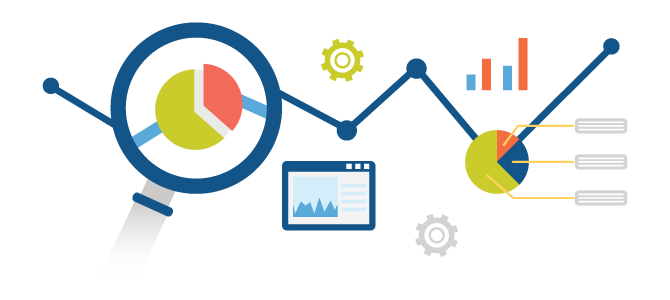Introduction
Measuring success is paramount. Defining the right metrics that align with your objectives is crucial to steering your company toward growth and prosperity. Metrics serve as your compass, guiding decisions and actions to drive success. In this comprehensive beginner’s guide, we will explore the art of defining the right metrics for your business. From understanding the relevance of metrics to practical implementation, we will equip you with the knowledge and tools to harness the power of data and drive your business to new heights.
The Role of Metrics in Business Success
Metrics play a pivotal role in quantifying and evaluating your business’s performance. They provide valuable insights into various aspects, such as customer behavior, revenue generation, operational efficiency, and overall growth. Defining and tracking the right metrics gives you a data-driven perspective on your business, enabling you to make informed decisions to achieve your goals.

Metrics serve several essential functions:
- Performance Measurement
Metrics act as a yardstick to measure the success of your business initiatives. They clearly show how well your company performs against set targets and objectives. You can identify areas that require improvement and allocate resources efficiently by analyzing metrics.
- Goal Alignment
Metrics ensure that all levels of your organization are aligned with the overarching business goals. When metrics are tied to strategic objectives, employees at every level clearly understand their contributions to the company’s success.
Understanding the Different Types of Metrics
Metrics fall into various categories, each serving a distinct purpose in assessing different facets of your business.
- Financial Metrics
Financial metrics focus on the financial health of your business. These include metrics such as revenue growth, profit margins, return on investment (ROI), and customer lifetime value (CLV). Financial metrics are crucial for evaluating your business’s overall performance and sustainability.
- Customer Metrics
Customer metrics revolve around understanding and analyzing customer behavior and satisfaction. Examples include customer acquisition cost (CAC), customer retention rate, and Net Promoter Score (NPS). These metrics help you assess customer loyalty, identify churn reasons, and optimize your customer acquisition strategies.
- Operational Metrics
Operational metrics delve into the efficiency and effectiveness of your business processes. Metrics like inventory turnover, order fulfillment time, and employee productivity offer insights into how well your operations are running and where improvements can be made.
- Growth Metrics
Growth metrics are crucial for businesses aiming to expand and gain a competitive edge. These metrics may include market share, customer acquisition rate, and average revenue per user (ARPU). By tracking growth metrics, you can gauge the success of your growth strategies and make data-driven decisions to scale your business.

Identifying Key Performance Indicators (KPIs)
Key Performance Indicators (KPIs) are specific metrics that directly measure progress toward your strategic goals. Choosing the right KPIs aligns your efforts with your desired outcomes. To define relevant KPIs, follow these steps:
- Clarify Business Objectives
Identify your business objectives and the specific outcomes you want to achieve. Each objective should have corresponding KPIs that align with your goals.
- Focus on Actionable Metrics
Select KPIs that you can influence and act upon. Actionable metrics allow you to make data-driven decisions that lead to tangible improvements.
- Prioritize Relevance
Ensure that your chosen KPIs are relevant to your business and reflect its unique needs and challenges. Avoid selecting KPIs solely based on industry benchmarks.
Setting SMART Goals for Measurement
SMART goals are Specific, Measurable, Achievable, Relevant, and Time-bound. Aligning metrics with SMART goals ensures that they are well-defined and contribute directly to your business’s growth. By establishing clear goals, you can measure progress and adapt strategies effectively.
- Specific
Clearly define the metric you want to measure and the desired outcome. Avoid vague or ambiguous goals that may lead to confusion.
- Measurable
Ensure that your goals can be quantified and measured. Define the units of measurement and the data sources to track progress.
- Achievable
Set goals that are realistic and attainable. Unrealistic goals can lead to demotivation and hinder progress.
- Relevant
Ensure that your goals are relevant to your business objectives. Align each goal with your overall growth strategy.
- Time-bound
Set a clear timeframe for achieving your goals. Time-bound goals provide a sense of urgency and focus.
Leveraging Product Analytics for Business Insights
Product analytics is a powerful tool that delves into user behavior and product performance. By employing product analytics, you can track customer interactions, identify pain points, and optimize your products for enhanced user experiences. Understanding the insights gleaned from product analytics enhances your ability to define relevant metrics and align them with your growth objectives.
- Understanding User Behavior
Product analytics allows you to track user interactions within your product, such as clicks, navigation patterns, and feature usage. This data provides valuable insights into how users engage with your product, helping you identify popular features and areas for improvement.
- Identifying User Pain Points
By analyzing product analytics data, you can identify pain points and bottlenecks in the user experience. This insight allows you to prioritize enhancements that address customer needs and drive customer satisfaction.
- Optimizing Product Performance
Product analytics helps you measure the impact of product updates and changes on user behavior. By tracking user engagement before and after updates, you can assess the effectiveness of product enhancements and iterate accordingly.
The Continuous Evolution of Metrics
As your business evolves, so do your metrics. Reviewing and reassessing your chosen metrics periodically is vital to ensure they remain relevant and aligned with your current business goals. Being flexible and open to refining your metrics ensures you maintain a data-driven approach to decision-making throughout your business journey.
- Regular Evaluation and Feedback
Regularly assess the effectiveness of your metrics in providing meaningful insights. Seek stakeholder feedback to identify gaps or areas for improvement in your current metrics.
- Adaptation to Business Changes
- As your business landscape changes, reassess your metrics to ensure they remain aligned with your evolving goals and objectives. New products, market shifts, and business expansions may necessitate adjustments to your metrics.
- Keeping Abreast of Industry Trends
Stay informed about emerging industry trends and best practices in metrics and analytics. Continuous learning and adopting innovative measurement techniques will keep your metrics relevant and effective.
Conclusion
In conclusion, defining the right metrics is the bedrock of your business’s success. By understanding the role of metrics, identifying relevant types, setting SMART goals, leveraging product analytics, and continually evolving your metrics, you empower your business with the knowledge to thrive in a dynamic marketplace. Embrace the power of data, and let well-defined metrics guide you towards growth and prosperity.
Check our Comprehensive Guide to Product Analytics Metrics.


